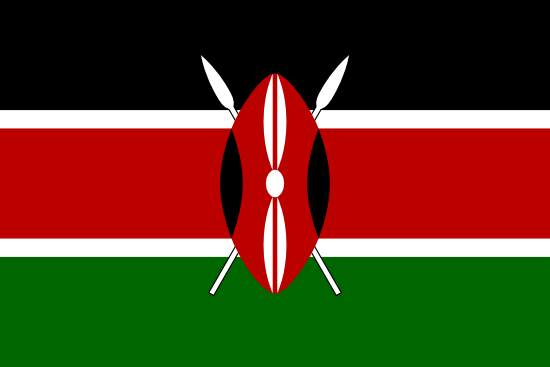National legislation
NEW!!! Draft ABS Revised regulations Click here
National
The government of Kenya has enacted several policies and legislation to help streamline the activities of institutions that manage biodiversity resources ie address the protection of individual species, the protection of ecosystems, and also promote sustainable use of resources in Kenya.
Constitution
Constitution of Kenya, 2010. Part 2. Environment and natural resources, Section 69. Obligations in respect of the environment
(a) ensure sustainable exploitation, utilization, management, and conservation of the environment and natural resources, and ensure the equitable sharing of the accruing benefits;
(b) work to achieve and maintain a tree cover of at least ten percent of the land area of Kenya;
(c) protect and enhance the intellectual property in, and indigenous knowledge of, biodiversity and the genetic resources of the communities;
(d) encourage public participation in the management, protection, and conservation of the environment;
(e) protect genetic resources and biological diversity;
(f) establish systems of environmental impact assessment, environmental audit, and monitoring of the environment;
(g) eliminate processes and activities that are likely to endanger the environment; and
(h) utilize the environment and natural resources for the benefit of the people of Kenya.
(2) Every person has a duty to cooperate with State organs and other persons to protect and conserve the environment and ensure ecologically sustainable development and use of natural resources.
Section 70. Enforcement of environmental rights
Section 71. Agreements relating to natural resources
Policies and Legislations framework related to biodiversity conservation
- The Wildlife Management Policy and Wildlife Conservation and Management Act, 2013. provide for the protection, conservation, sustainable use and management of wildlife in Kenya WildlifeConservationandManagementActCap376_2_.pdf
- The Forest Policy and the Forest Conservation and Management Act, 2016. to give effect to Article 69 of the Constitution with regard to forest resources; to provide for the development and sustainable management, including conservation and rational utilization of all forest resources for the socio-economic development of the country ForestConservationandManagementAct.pdf
- Fisheries Management and Development Act, 2016 (No. 35 of 2016) provide for the conservation, management and development of fisheries and other aquatic resources to enhance the livelihood of communities dependent on fishing and to establish the Kenya Fisheries Services.FisheriesManagementandDevelopmentAct35of2016.pdf
- Environmental Management and Co-ordination Act, 1999 (Cap. 387) provide for the establishment of an appropriate legal and institutional framework for the management of the environment
provide for the establishment of the National Environment Management Authority(NEMA) . The role of NEMA is to supervise and coordinate all matters relating to the environment, and to serve as the principal instrument of Government in the implementation of environmental policy. Its functions are to coordinate the activities of environmentally relevant bodies in order to promote rational use and sustainability
- Wetlands Conservation and Management Policy and Environmental Management and Co-ordination (Wetlands, River Banks, Lake Shores, and Sea Shore Management) Regulation, 2009 (Cap. 387) make provision for the management, conservation and sustainable use of wetlands and wetland resources and the sustainable utilization and conservation of (resources on) river banks, lake shores, and the seashore. Click here to download
- Environmental Management and Coordination (Conservation of Biological Diversity and Resources, Access to Genetic Resources and Benefit Sharing) Regulations, 2006 (L.N. No. 160 of 2006). These Regulations concern the conservation of biological diversity in Kenya and the control of access to genetic resources of Kenya . Click here to download
- Environmental (Prevention of Pollution in Coastal Zone and other Segments of the Environment) Regulation, 2003 (Cap. 387). These Regulations concern the prevention of pollution that can affect the coast, in particular oil pollution.
- The Science, Technology, and Innovation Act No. 28 of 2013 recognize Kenya Marine and Fisheries Research Institute (KMFRI) KMFRI as a national research institution under section 56, fourth schedule. to undertake research in “marine and freshwater fisheries, aquaculture, environmental and ecological studies
- Kenya Agricultural and Livestock Research Act of 2013, Establishes the Genetic Resources Research Institute (GeRRI) for conserving and sustainably use plant genetic resources, and animal and microbial genetic resources.
Others….
- Kenya Water Towers Agency Order, 2012 (L.N. No. 27 of 2012). This Order establishes a state corporation to be known as the Kenya Water Towers Agency. The Agency shall, among other things: (a) coordinate and oversee the protection, rehabilitation, conservation, and sustainable management of water towers; (b) coordinate and oversee the recovery and restoration of forest lands, wetlands, and biodiversity hot spots (i.e. unique habitat with rare and diverse animals, organisms and endangered species, which is under threat of extinction)
- Agriculture Act (Cap. 318). to promote and maintain stable agriculture, to provide for the conservation of the soil and its fertility, and to stimulate the development of agricultural land in accordance with the accepted practices of good land management and good husbandry.
- Land Act, 2012 (No. 6 of 2012). makes provision for a wide variety of matters regarding public and private land and community land (as defined respectively by Articles 62, 63, 64, and 260 of the Constitution), and in particular, provides of the sustainable administration and management of land and land-based resources.
- National Museums and Heritage Act (Cap. 216). to provide for the establishment, control, management, and development of national museums and the identification, protection, conservation, and transmission of the cultural and natural heritage of Kenya
- Traditional Knowledge and Culture Expressions Act 2016, seeks to enable communities to control the use of culturally significant and economically valuable knowledge and expressions. Biodiversity and indigenous knowledge are important resources for Kenya’s economic development, as recognized in the Constitution (Article 11(2)(c)
